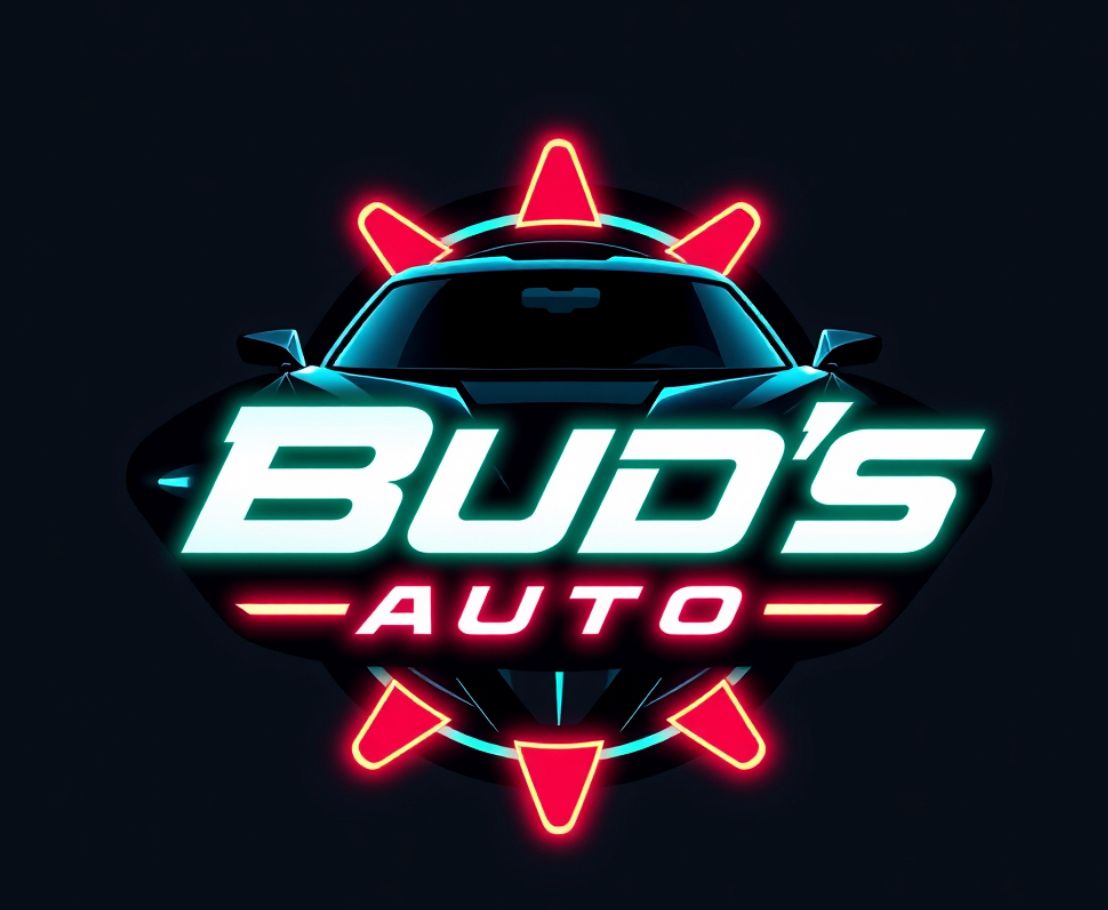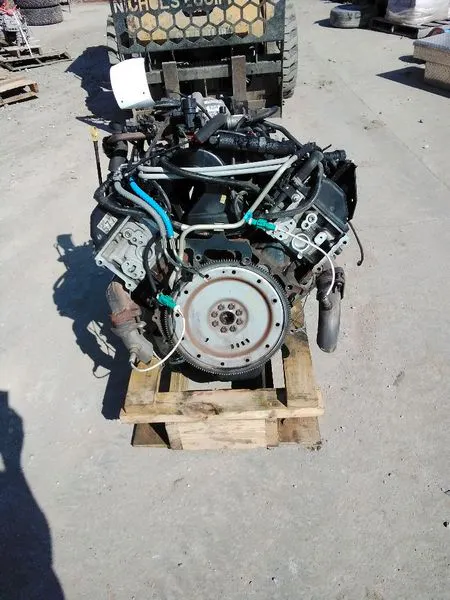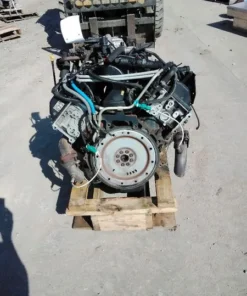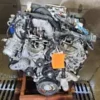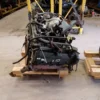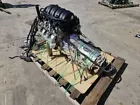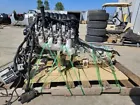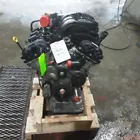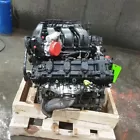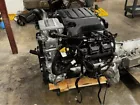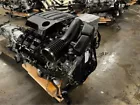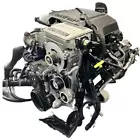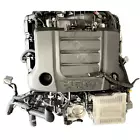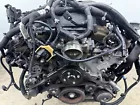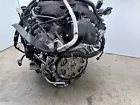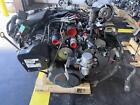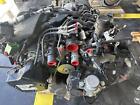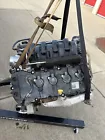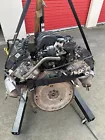Here’s a polished ~1,700‑word article on buying a Ford F150 5.4L engine—covering what’s for sale, price ranges, pros & cons, and insider advice if you’re in the market:
Where to Buy a Ford F150 5.4L engine & Price Overview
A) Remanufactured/Crate Engines
-
Fraser Engines offers remanufactured 2‑valve (2V) Triton engines:
-
Standard build: $2,599 + $450 core deposit + $300 shipping; 3‑year/100K‑mi warranty
-
-
For the 3‑valve (3V) Triton:
-
Standard build: $2,799 + $450 core + $300 shipping; 3‑year/unlimited‑mile warranty
-
B) Used Engines (BudsAuto Listings)
-
2005–2008 Ford F150 5.4L engine (3V, 3V SOHC) engines from $1,447–$1,997 depending on mileage
-
2008 F‑150 5.4 L engines range from ~$2,125 to ~$2,835
-
Various other OEM used engines for F‑150 models typically run between $1,000–$2,700, depending on condition and seller
Common Issues with the Ford F150 5.4L engine & What to Watch For
The Ford F150 5.4L engine Triton V8 has a reputation for specific weak points—many are preventable with good maintenance:
-
Spark Plug Problems
The 2‑valve engines may have insufficient threads, while 3‑valve models sometimes seize or break spark plugs upon removal. Ford mandated an aluminum thread insert to address this -
Timing Chain & Tensioner Failures
A frequent issue—tensioner failure causes rattling and may lead to catastrophic engine damage if delayed -
Cam Phaser Wear (on 3V)
Early 3‑valve engines suffer from cam phaser and timing chain wear. These were widely reported and notorious enough that a mechanic warns of possible full engine replacements costing $6–7K -
Oil Leaks & Consumption
Common leaks from oil pan or valve cover gaskets, along with heavy oil consumption due to worn rings or seals . -
Fuel Pump Driver Module Failures
Positioned poorly near the frame, these modules corrode easily—causing stalling or no-start issues. Fixes can cost $772–$967 in labor -
Overheating Concerns
Caused by coolant system failures, clogs, or thermostat issues; may lead to warped heads or blown gaskets
Owner Insights & Real‑World Reliability
Opinions vary, but one constant: regular maintenance is essential.
And from r/FordTrucks:
Buying Advice: What to Consider & When to Go New vs. Used
| Option | Pros | Cons |
|---|---|---|
| Remanufactured Engine (Fraser) | Extended warranty, updated components, clean build | Higher cost (~$2.6–$3.7K + shipping) |
| Used Engine (eBay, salvage) | Lower cost, quicker purchase | No warranty, unknown history, potential hidden issues |
Buying Checklist:
-
Know the engine variant: 2V vs 3V—3V adds complexity, but fixes exist.
-
Check maintenance logs: Oil change intervals, tensioner replacements, spark plug history.
-
Listen for warning noises: Rattling, ticking at startup? Get it checked.
-
Inspect for leaks: Oil spots underneath vehicle are a red flag.
-
Ask about internal upgrades: Has the engine had tensioner, pump, spark‑plug upgrades?
Summary & Recommendation
-
If reliability and warranty are your priority, Fraser’s remanufactured engines are robust—especially their “Advantage” builds tackling cam phasers and spark‑plug threads.
-
If you’re on a budget and confident in your mechanic, a used engine can work—just prioritize high-mileage 2V units with a clean maintenance history.
-
Maintenance is everything: Frequent oil changes, quality filters, and early component replacement determine longevity—not just the engine type.
Final Thoughts
The Ford F150 5.4L engine has a mixed legacy—but let’s be real: many engines fail from neglect, not design. With honest background checks, smart upgrades, and hands-on care, this engine can be incredibly durable. Whether you go used or remanufactured, you’ll know now what to look—and listen—for.
-
History & Variants of the Ford F150 5.4L engine
-
Year-by-Year Comparison
-
Performance Capabilities
-
Aftermarket Support & Upgrade Potential
-
Who Should Buy One (and Who Shouldn’t)
-
Conclusion (With Expert Tips)
History & Variants of the Ford F150 5.4L engine
The Ford F150 5.4L engine was introduced by Ford in 1997 as part of its Modular engine family, which also includes the 4.6L V8 and the 6.8L V10. It became one of the most widely used engines in Ford’s truck and SUV lineup.
Major Variants:
-
5.4L 2-Valve SOHC (1997–2004)
Known for simplicity and reliability, this early design used 2 valves per cylinder and was easier to maintain. Popular in early F-150s and Expeditions. -
5.4L 3-Valve SOHC (2004–2010)
Introduced for more power and efficiency, this model had variable cam timing (VCT) and 3 valves per cylinder. Unfortunately, it also introduced complex cam phasers and timing issues. -
5.4L DOHC 4-Valve (Performance Use)
Found in the Ford Shelby GT500 and Lincoln Navigator, this was a high-output version featuring dual overhead cams and significantly higher horsepower. Not as common in pickups.
Year-by-Year Overview: Which F-150 5.4L to Choose?
| Model Year | Engine Type | Known Strengths | Known Issues |
|---|---|---|---|
| 1997–2003 | 2V SOHC | Simpler design, easier repairs | Spark plug blowouts |
| 2004 | 3V SOHC | Higher torque, better MPG | Spark plug breakage, phaser issues |
| 2005–2007 | 3V SOHC | Common, many aftermarket fixes | Cam phaser, timing, VCT problems |
| 2008–2010 | 3V SOHC (improved) | Some design upgrades, less prone to plug issues | Still requires close maintenance |
If you’re buying used, 2003 2V and 2008 3V with documented maintenance are solid bets.
Performance Specs: What You’re Getting
| Engine Version | Horsepower | Torque (lb-ft) | Towing Capacity (F-150) |
|---|---|---|---|
| 5.4L 2V | ~260 hp | ~350 lb-ft | ~8,000 lbs |
| 5.4L 3V | 300 hp | 365 lb-ft | Up to 11,000 lbs |
| 5.4L DOHC | 500+ hp (Shelby) | 480+ lb-ft | N/A |
Though not the fastest engine, the 5.4L excels in torque, making it ideal for towing, hauling, and off-road driving. Paired with the right transmission and gear ratio, it can compete with modern turbo V6s in real-world utility.
- Aftermarket Support & Upgrade Potential
The Ford F150 5.4L engine has one of the largest aftermarket ecosystems among American V8s:
Common Upgrades:
-
Cam Phaser Lockout Kits: Fix variable cam timing problems once and for all
-
Tuner/Programmer (e.g., SCT, Edge): Improves throttle response, MPG, and transmission shift points
-
Cold Air Intake & Exhaust Kits: Easy bolt-on performance + deeper growl
-
Timing Chain & Guide Upgrades: Stronger, quieter timing systems available
-
Ignition Coil & Plug Upgrades: Prevent misfires and hard starts
-
Oil Pump Upgrade: For high-mileage builds or towing-heavy setups
Many truck owners also opt to delete VCT (Variable Cam Timing) entirely, which increases long-term reliability—especially on the 3V engines.
Who Should Buy a Ford F150 5.4L engine? (And Who Shouldn’t)
Good Fit For:
-
DIYers comfortable with preventative maintenance
-
Fleet managers or contractors needing strong, affordable trucks
-
Off-road and overlanding builds (plenty of torque and parts)
-
Budget truck owners looking for long-haul durability
Probably Not Ideal If:
-
You want modern fuel economy (consider EcoBoost instead)
-
You’re not willing to spend money on maintenance (especially 3V)
-
You expect plug-and-play upgrades like newer engines
-
You plan to tow ultra-heavy trailers long distances every week
If you’re okay putting in the time (or money) upfront, the 5.4L can be a workhorse for 200K–350K miles. If not? It might be a frustrating engine to own.
Final Buying Tips: Insider Advice
Used Engine?
-
Request a compression test and listen for valvetrain rattle on cold start.
-
Ask the seller about oil change intervals (preferably full synthetic every 3K–5K miles).
-
Avoid engines with “tick of death” or timing chain slap.
Remanufactured/Crate Engine?
-
Choose a builder that:
-
Includes updated cam phasers or deletes
-
Uses threaded spark plug inserts
-
Offers a long warranty (2–3 years minimum)
-
-
Be prepared to replace water pump, timing set, and tensioners when installing.
Swapping Engines?
-
Be sure to match:
-
VIN code (e.g., “5” for 3V engine)
-
PCM programming
-
Intake manifold and wiring harness
-
-
2004 was a crossover year — double-check if your truck is early 2V or later 3V!
Conclusion: Is a Ford F150 5.4L engine Still Worth It in 2025?
Despite the internet horror stories, the Ford F150 5.4L engine still has a loyal following — and for good reason. It’s not flawless, but with the right knowledge and attention, it can serve as a durable, budget-friendly powerplant.
Here’s a quick recap:
| Factor | Verdict |
|---|---|
| Reliability (2V) | Good to excellent if maintained |
| Reliability (3V) | Fair, can be improved with fixes |
| Availability | Excellent (used and reman options) |
| Affordability | Still one of the most cost-effective V8s |
| Ease of Repair | Moderate (2V easier than 3V) |
| Longevity | 200K–300K+ with proper care |
If you’re shopping for one, know this: most “bad engines” are the result of neglect, poor maintenance, or cheap repairs. If you’re willing to invest in doing it right the first time, this engine will give you years — and possibly decades — of strong, dependable service.
